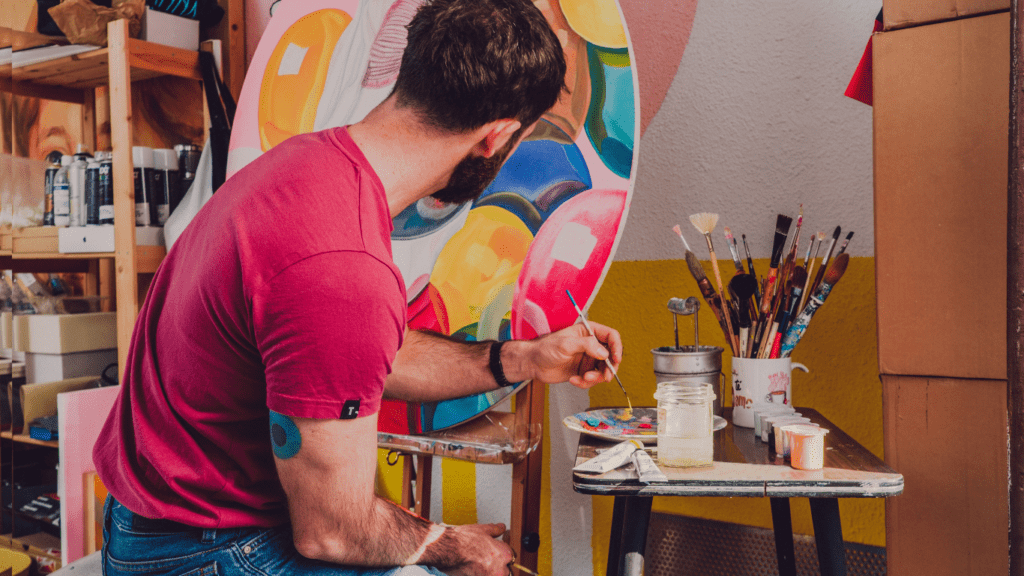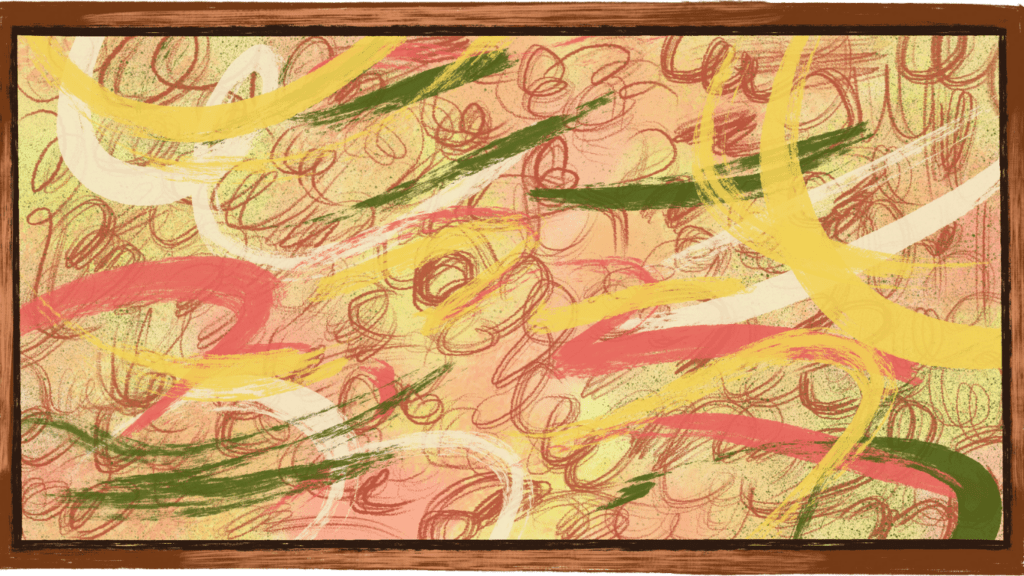Decoding the Basics of Contemporary Art
Contemporary art often perplexes due to its diverse forms and lack of clear boundaries. Understanding its core elements makes it more approachable.
What Is Contemporary Art?
Contemporary art refers to the artwork produced from the latter half of the 20th century to today. It differs from modern art, which spans the late 19th to mid-20th centuries. Contemporary pieces often engage with current issues and employ a variety of media, challenging traditional definitions of art.
- Diverse Media: Artists use traditional materials like paint and canvas and newer media, such as digital installations and video art. For instance, Bruce Nauman’s video installations and Yayoi Kusama’s infinity rooms exemplify this diversity.
- Concept-Driven: Ideas often take precedence over aesthetics. Conceptual art emphasizes the artist’s intention, as seen in works by Damien Hirst and Marina Abramović.
- Global Perspective: Contemporary art showcases a wide range of cultural influences due to globalization. Ai Weiwei’s installations and El Anatsui’s sculptures reflect this pluralism.
- Social Commentary: Many works address current social issues like politics, identity, and the environment. Banksy’s street art and Kara Walker’s silhouettes often comment on these themes.
By recognizing these characteristics, one can begin to decode the complexities of contemporary art.
Major Movements in Contemporary Art
Several major movements define the landscape of contemporary art, each contributing unique perspectives and techniques.
Abstract Expressionism
Abstract Expressionism emerged in the 1940s and 1950s. It focuses on spontaneous, automatic, or subconscious creation. Jackson Pollock’s drip paintings and Mark Rothko’s color fields exemplify this movement. They used large canvases and dynamic techniques to evoke emotion.
Minimalism and Conceptual Art
Minimalism highlights simplicity and focuses on the artwork’s physical presence. Artists like Donald Judd and Dan Flavin reduced forms to basic shapes and colors. Conceptual Art, on the other hand, prioritizes ideas over aesthetic. Sol LeWitt and Joseph Kosuth created works where the concept dictated the form. Both movements challenge traditional boundaries and encourage viewers to engage intellectually.
Influential Contemporary Artists and Their Works

Understanding contemporary art becomes easier by examining the artists who’ve shaped its trajectory. These influential figures provide a foundation for recognizing key themes and methodologies.
Pioneers of the Contemporary Scene
Several artists stand out as pioneers in contemporary art, having laid the groundwork for various movements and practices.
- Andy Warhol: Warhol’s Pop Art revolutionized how we view consumer culture. Works like Campbell’s Soup Cans and Marilyn Diptych are iconic examples of his influence.
- Jean-Michel Basquiat: Basquiat’s powerful graffiti-influenced style addresses issues of race and identity. His work Untitled (1982) is a significant piece in his oeuvre.
- Cindy Sherman: Sherman’s Untitled Film Stills series challenges traditional gender roles and identity through photography. Her self-portraits reimagine stereotypes.
Must-Know Contemporary Artists Today
These contemporary artists continue to shape the dynamic field with their innovative ideas and practices.
- Kara Walker: Known for her stark silhouettes, Walker tackles themes of race, gender, and history. A Subtlety remains a striking installation addressing slavery.
- Takashi Murakami: Murakami blends traditional Japanese art with pop culture. His Superflat movement and works like 727 redefine cultural narratives.
- Olafur Eliasson: Eliasson’s immersive installations engage with environmental and perceptual concerns. The Weather Project at Tate Modern is a notable example.
- Kehinde Wiley: Wiley’s portraits of African Americans in classical poses challenge historical narratives. His painting of President Barack Obama garnered widespread acclaim.
These artists and their works contribute significantly to the ongoing conversation in contemporary art, reflecting diverse perspectives and innovative practices.
How to Approach and Appreciate Contemporary Art
Approaching contemporary art can feel daunting. Familiarizing yourself with some key strategies makes the experience more rewarding.
Viewing Tips for Beginners
Study Context: Research the artist and the movement to understand the art’s background. Knowing about Yayoi Kusama’s fascination with infinity or Basquiat’s commentary on racial issues enriches the viewing experience.
Visit Exhibitions: Visit contemporary art museums and galleries. Engage with artworks and read accompanying descriptions. Locations like the Tate Modern in London or MOCA in Los Angeles offer exemplary contemporary collections.
Be Open-Minded: Approach contemporary art without preconceived notions. Art can provoke unexpected emotions, and an open mind helps in experiencing its full impact.
Ask Questions: Don’t hesitate to ask questions or seek guidance from curators. Asking about a piece’s purpose or history can reveal deeper layers of meaning.
Engaging with Art Critically and Emotionally
Reflect on Initial Reactions: Pay attention to your first impressions of a piece. Whether a work by Olafur Eliasson makes you feel awe or discomfort, noting these reactions is crucial.
Explore Themes: Dive into recurring themes within the artwork. Kara Walker’s exploration of race and history or Murakami’s blend of high and low culture can offer new perspectives.
Balance Critique and Emotion: Balance analytical thinking with emotional responses. Understanding the technical aspects, like a Basquiat’s use of color and form, while also acknowledging its emotional impact helps appreciate the work fully.
Participate in Discussions: Join art forums or attend public talks. Discussing contemporary art with others can provide diverse viewpoints and insights.
Approaching contemporary art through these strategies helps bridge the gap between you and the artwork. This connection enhances overall appreciation and understanding.
Places to Experience Contemporary Art
Exploring contemporary art in person or online helps deepen understanding and appreciation.
Top Museums and Galleries Worldwide
Many renowned museums and galleries feature extensive contemporary art collections. The Museum of Modern Art in New York hosts pieces by influential artists like Jackson Pollock and Marina Abramović.
In London, the Tate Modern offers dynamic exhibitions, including works by Anish Kapoor and Jenny Holzer. Paris’s Centre Pompidou showcases diverse contemporary works from global artists.
The Guggenheim Museum in Bilbao presents innovative installations, highlighting current artistic trends. Visiting these institutions enhances exposure to contemporary art, making it accessible and engaging.
Virtual Tours and Online Collections
For those unable to visit in person, many museums offer virtual tours and online collections. The Louvre’s virtual gallery allows viewers to explore contemporary exhibitions from home.
The Metropolitan Museum of Art provides an extensive online database with high-resolution images and detailed descriptions of contemporary pieces. Google’s Arts and Culture platform offers virtual tours of institutions like the Uffizi Gallery, enabling users to experience contemporary artworks remotely.
Engaging with these online resources makes contemporary art accessible worldwide, fostering a broader appreciation and understanding.


 Parisilyn Cruz has played a pivotal role as an article writer and key contributor in the development of Innov Art Foundry. Her deep passion for the art world is reflected in the insightful and engaging content she creates, covering everything from the latest art trends to in-depth explorations of virtual reality's impact on artistic expression. Parisilyn's writing not only informs but also inspires readers, making complex topics accessible and intriguing for a broad audience.
Beyond her writing, Parisilyn has been instrumental in shaping the direction of Innov Art Foundry. Her contributions have helped to establish the platform as a trusted resource for both seasoned artists and newcomers to the art scene. By blending her creativity with a keen understanding of the art landscape, Parisilyn Cruz has ensured that Innov Art Foundry remains at the forefront of contemporary art discourse, continually providing valuable insights and fostering a vibrant community of art enthusiasts.
Parisilyn Cruz has played a pivotal role as an article writer and key contributor in the development of Innov Art Foundry. Her deep passion for the art world is reflected in the insightful and engaging content she creates, covering everything from the latest art trends to in-depth explorations of virtual reality's impact on artistic expression. Parisilyn's writing not only informs but also inspires readers, making complex topics accessible and intriguing for a broad audience.
Beyond her writing, Parisilyn has been instrumental in shaping the direction of Innov Art Foundry. Her contributions have helped to establish the platform as a trusted resource for both seasoned artists and newcomers to the art scene. By blending her creativity with a keen understanding of the art landscape, Parisilyn Cruz has ensured that Innov Art Foundry remains at the forefront of contemporary art discourse, continually providing valuable insights and fostering a vibrant community of art enthusiasts.